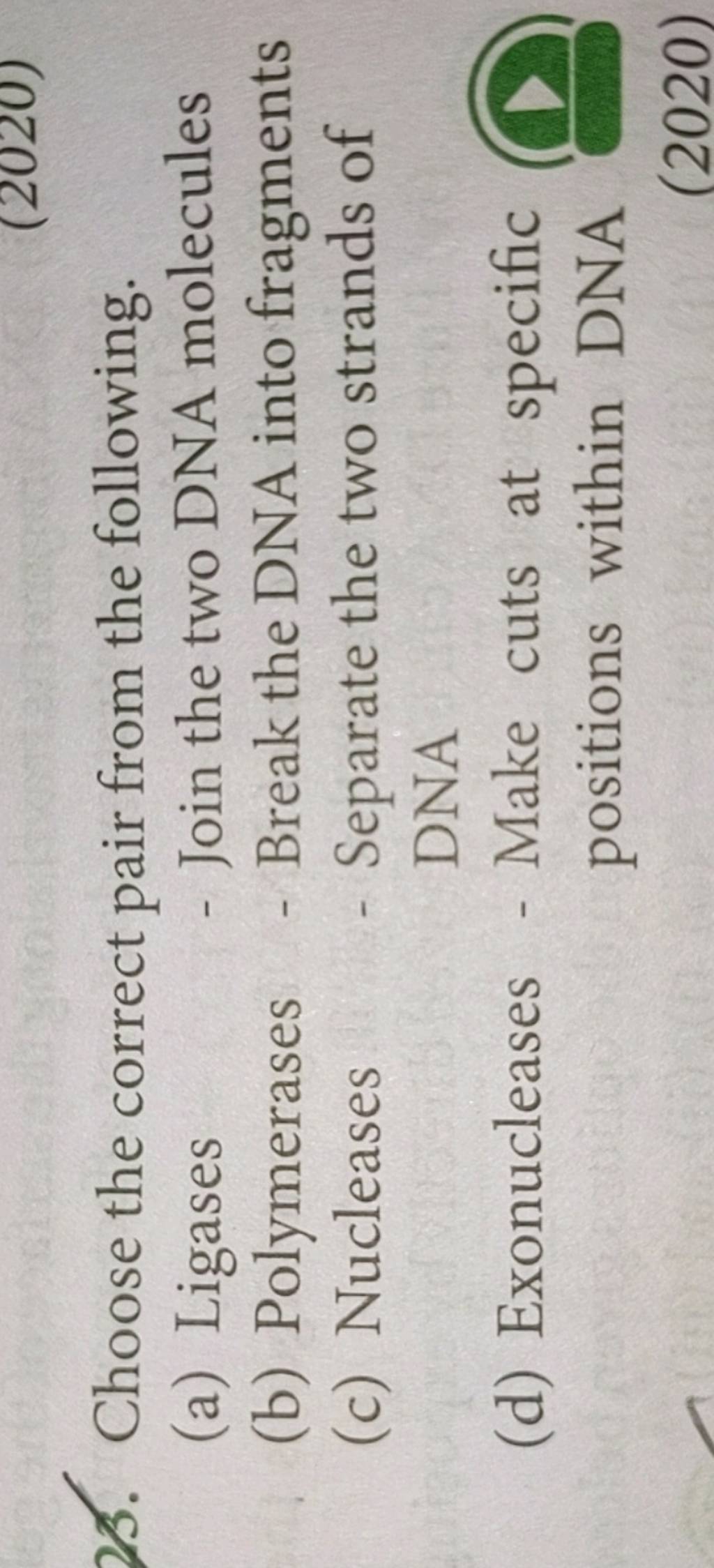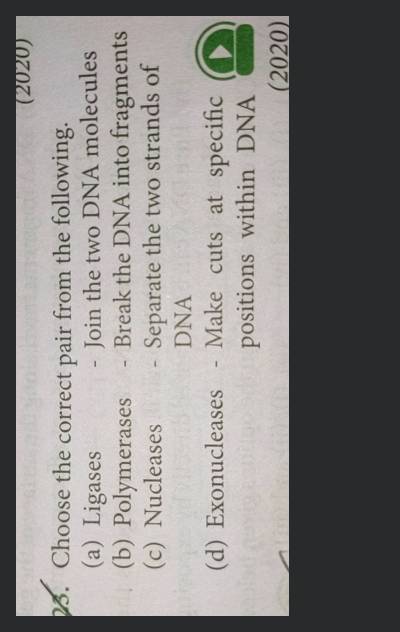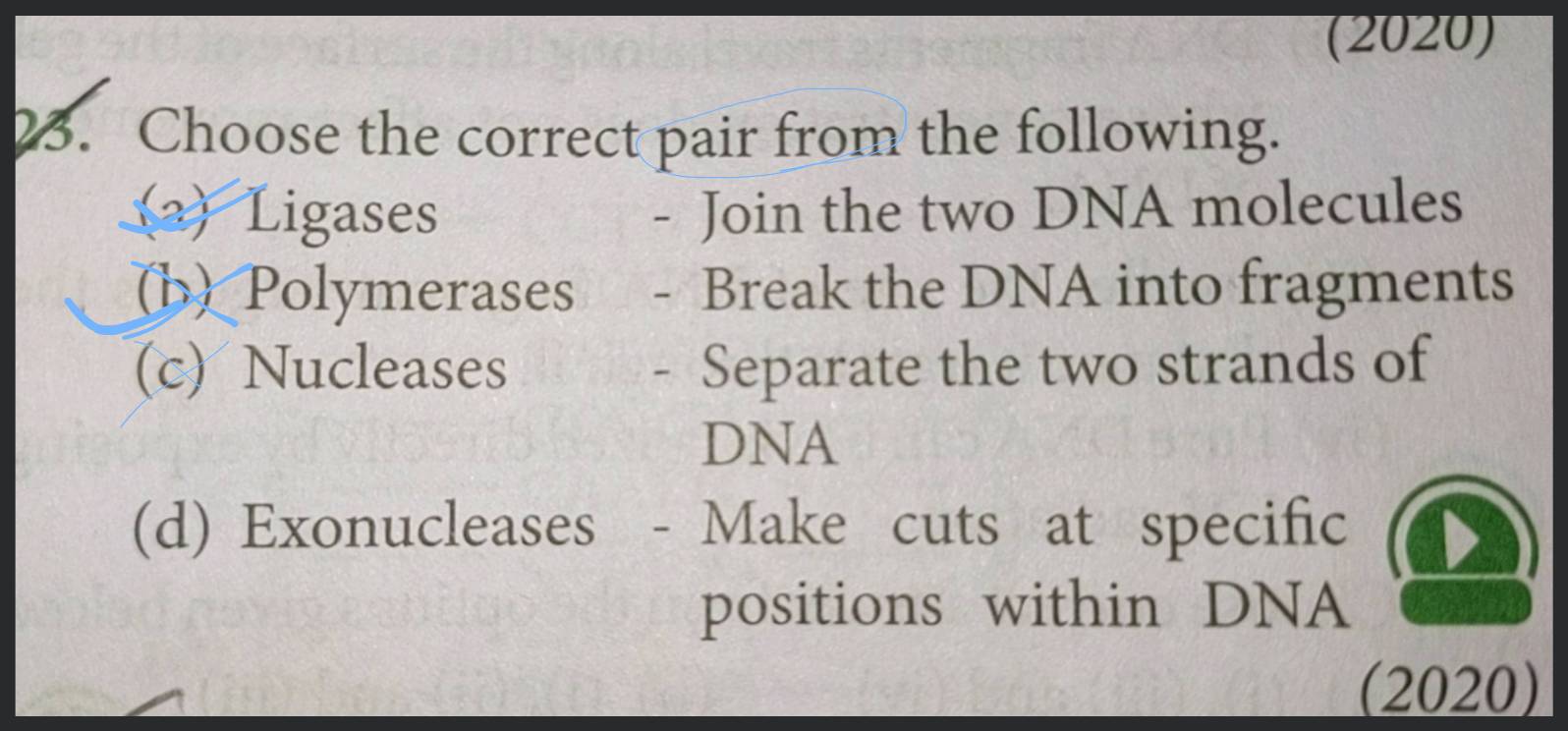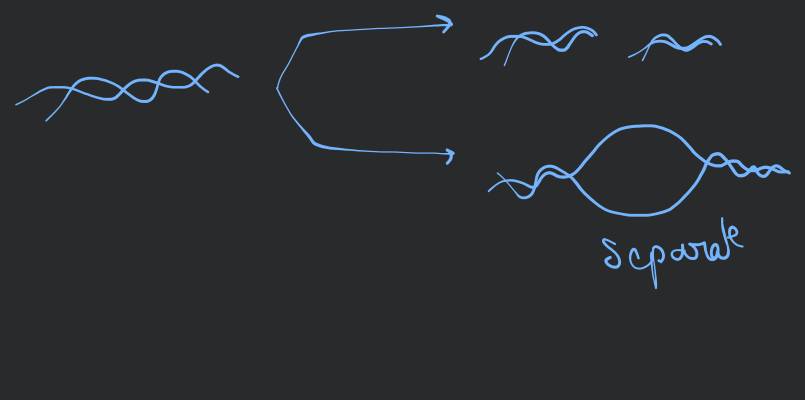Question
Question asked by Filo student

25. Choose the correct pair from the following. (a) Ligases - Join the two DNA molecules (b) Polymerases - Break the DNA into fragments (c) Nucleases - Separate the two strands of DNA (d) Exonucleases - Make cuts at specific positions within DNA
Found 4 tutors discussing this question
Discuss this question LIVE
6 mins ago

One destination to cover all your homework and assignment needs
Learn Practice Revision Succeed

Instant 1:1 help, 24x7
60, 000+ Expert tutors

Textbook solutions
Big idea maths, McGraw-Hill Education etc

Essay review
Get expert feedback on your essay

Schedule classes
High dosage tutoring from Dedicated 3 experts
Practice more questions on Biotechnology
Question 2
Easy
Views: 5,638
Question 3
Medium
Views: 6,014
(a) Menstrual phase
(b) Follicular phase
(c) Luteal phase
(ii) A proper understanding of menstrual cycle can help immensely in family planning. Do you agree with the statement ? Provide reasons for your answer.
Question 4
Medium
Views: 6,037
Students who ask this question also asked
Question 1
Views: 5,302
Question 2
Views: 5,356
Question 3
Views: 5,640
Question 4
Views: 5,795


Stuck on the question or explanation?
Connect with our Biology tutors online and get step by step solution of this question.
231 students are taking LIVE classes
| Question Text | 25. Choose the correct pair from the following.
(a) Ligases
- Join the two DNA molecules
(b) Polymerases
- Break the DNA into fragments
(c) Nucleases
- Separate the two strands of DNA
(d) Exonucleases - Make cuts at specific positions within DNA |
| Updated On | Apr 25, 2024 |
| Topic | Biotechnology |
| Subject | Biology |
| Class | Class 12 |
| Answer Type | Video solution: 1 |
| Upvotes | 148 |
| Avg. Video Duration | 1 min |






